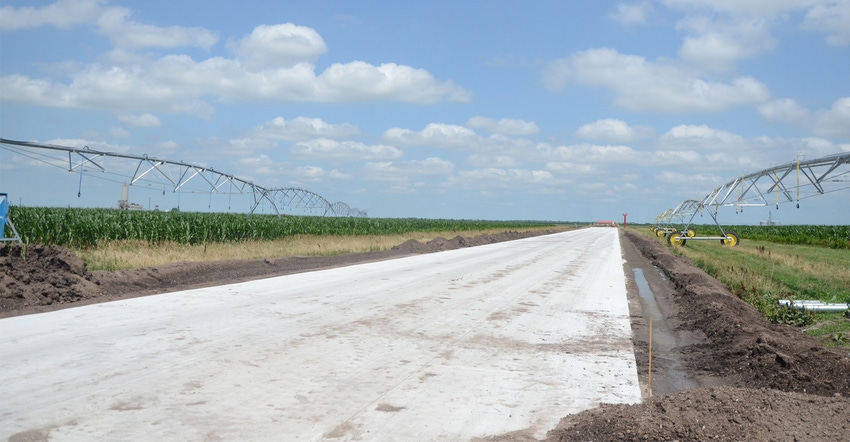
It’s that time of year again when thousands of visitors — from farmers and ranchers to agribusiness owners to FFA members — walk the busy streets of Husker Harvest Days. This year, for the first time, in addition to many infrastructure upgrades, those streets will be paved.
The upgrades, part of a $7.5 million investment by Farm Progress, Hall County, the City of Grand Island and private partners, include about 6 miles of paved streets, updated plumbing and draining, and a new electrical system, which had not been upgraded since the site was constructed over 40 years ago.
When people think Husker Harvest Days, one of the first things they remember from their experience over the years (along with seeing bigger and more advanced equipment) is the years it rained and the years it didn’t.
While we can’t change the weather, we can be better prepared for it. No more will visitors have to slog through canals of water and mud puddles to get to exhibitor lots. These new paved streets are built with an inverted crown, with grates at the center to drain the water. This drainage system is designed to handle 4 inches of rain if it all fell on the ground at the same time. Instead of 8 inches of grade change from the west to east end of the show site, there will now be 16 feet of grade change.
As with every year, HHD is the place to be to learn about the latest tools, technology and equipment.
The ag economy may be going through a down cycle, and tariffs imposed on commodities like soybeans and grain sorghum aren’t helping.
With over 600 exhibitors on the show’s 80-acre exhibitor field, HHD is a learning opportunity, and a good chance to take home knowledge to improve the bottom line for your farm or ranch operation, or learn about how new technology can help you trim costs or identify problem areas on your operation you weren’t previously aware of.
For example, this year at HHD, the University of Nebraska-Lincoln Institute of Agriculture and Natural Resource’s iconic Husker Red building will continue its focus on boosting the bottom line for farmers and ranchers with this year’s theme, “Managing Change and Challenge: Strengthening Nebraska’s Agricultural Economy.”
If there’s one thing Nebraska has plenty of, it’s cornstalks. There’s been a growing interest in cornstalk baling in the state in the last few years, and Nebraska Extension is working with equipment manufacturers to offer presentations cornstalk baling equipment options at HHD.
It goes without saying that one of the biggest draws each year is seeing new combines, tractors, grain carts, tillage and hay equipment in action in the field. Field demos are the perfect place to compare equipment side by side and see which piece of equipment offers the best fit for your operation and saves you time and money with fewer passes through the field.
There’s a reason HHD is called the world’s largest totally irrigated working farm show. If you’re looking for the latest in telemetry, new sprinkler packages for your center pivot, ways to reduce pivot track compaction or subsurface drip irrigation systems, you’ll find what you’re looking for at HHD.
Keep in mind that with the renovations this year, lot numbers have changed. So, be sure to check the show map or use the “My Show Planner” tool at HuskerHarvestDays.com.
Whether you’re looking for information, tech or tools to boost your bottom line, or if you just want to enjoy the new amenities, HHD is the place to be Sept. 11-13.
About the Author(s)
You May Also Like






